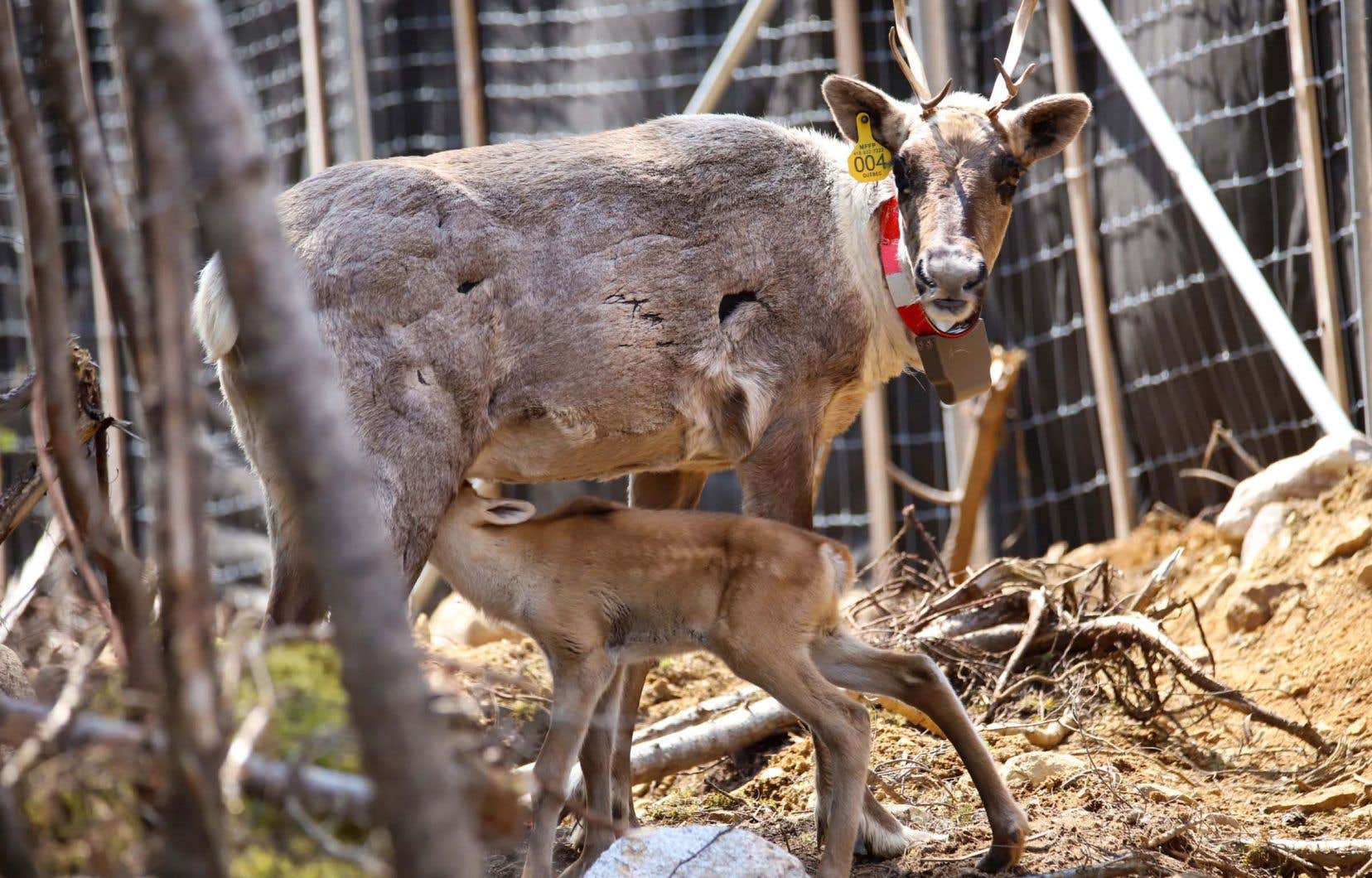Environment Minister Benoit Charette refuses to comment on the project to build wind turbines in the habitat of the last caribou in Charlevoix. The Legault government has promised to implement measures to preserve and restore the forest environments needed to prevent the extinction of this population currently held in captivity.
The duty published a text on Monday morning that demonstrates that despite repeated warnings from scientists about the repercussions of a major wind project on the caribou of Charlevoix, the developers are staying the course: they want to build wind turbines in the deer’s habitat.
Hydro-Québec, Énergir and Boralex have partnered to develop the Neiges projects, which consist of three projects of 400 megawatts (MW) each, for a total of 1,200 MW. One of these projects, called Secteur Charlevoix, would include the construction of wind turbines and roads directly in habitats that could become “refuges” for caribou in a context of climate change, according to scientists.
In the “optimization report” detailing their proposal, the developers state, however, that it is impossible to completely avoid the construction of wind turbines in this distribution area. According to what they argue, the removal of 17 wind turbines, out of the 68 planned for the entire Charlevoix Sector, “would make the project unviable.” The document specifies in particular the obligation to provide 400 MW to Hydro-Québec, but also regulatory constraints and the choice of optimal locations for the wind turbines.
“These explanations being succinct, imprecise or erroneous, they raise concerns that could lead, at the next stage of the impact assessment process, to issues of acceptability,” reply the experts from the Quebec Ministry of the Environment bluntly, after having analyzed the “optimization” proposal.
Quebec awaits the BAPE
Questioned on Monday, the office of the Minister of the Environment, the Fight against Climate Change, Wildlife and Parks, Benoit Charette, refused to comment on the planned construction of wind turbines in areas that could contribute to saving the caribou.
Should developers avoid the Charlevoix caribou range altogether? “The Neiges wind project in the Charlevoix sector will be subject to a review by the Bureau d’audiences publiques sur l’environnement in the coming months, during which stakeholders will be able to study the project and address this issue,” the minister’s office said in a written response to questions from the Duty.
The impact study is still being analyzed by the Quebec Ministry of the Environment, but the project will in fact be subject to a review by the Bureau d’audiences publiques sur l’environnement. It is only following this review that the Legault government should authorize the project.
However, government experts have been clear in their opinions formulated for nearly two years in their discussions with developers: the objective should be to “reduce the disturbance rate” of forest environments, which reaches approximately 90% in the region, to bring it below the 35% threshold. “Considering the scale of habitat restoration actions to be implemented in the distribution area of this population, new permanent disturbances must be avoided whenever possible.”
What’s more, according to the scientific literature, the impacts on the woodland caribou are felt up to four kilometres around the wind turbine sites. Experts from the Quebec Ministry of the Environment have therefore already indicated to the developers that “the complete protection of the range” of the threatened deer would involve moving all the wind turbines planned in this area, but also within a radius of four kilometres around it. They see this as “a compromise between the protection of a vulnerable species and the shift towards green energy.”
Enclosure soon to be full
The last 16 caribou in Charlevoix were captured in 2022 and put in enclosures to prevent their outright extinction. Since then, there have been several births and their number has increased to 39 animals, according to the most recent official report, published Wednesday. This means that the enclosure will soon no longer be large enough to contain all the animals, warns Martin-Hugues St-Laurent, a renowned specialist in the species.
The 20-hectare (0.2 km2) enclosure built in the Grands-Jardins National Park will soon be too small, Radio-Canada recently reported. In fact, this enclosure could reach its maximum capacity possibly within the next two to three years, admits Quebec. However, without measures to restore their habitat, the animals are condemned to captivity.
The Legault government also promised earlier this year to implement measures to save these caribou, “by focusing on habitat conservation and restoration.” These measures are currently the subject of a consultation. The Trudeau government, for its part, wants to include this population of deer in its emergency decree, which is also in public consultation. This decree would aim to prohibit activities that affect the habitat essential to the survival of the species.
